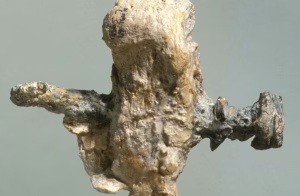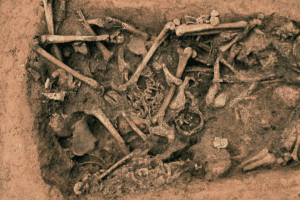
The Tongue That Would Not Rot: Saint Anthony’s Incorrupt Relic
Padua, Italy — April 8, 1263
When Franciscan friars opened the creaking, ageing stone tomb of Saint Anthony of Padua, thirty-two years after his death, they expected to find decayed bones, but what they discovered would become one of medieval Christianity’s most unsettling and inspiring relics, forcing us to question the ‘why’ even today. There before their eyes was something they didn’t expect: St Anthony’s tongue.
The Shock Of What They Saw Drew Gasps.
Saint Anthony had died in 1231 of oedema, so by 1263, the body had decomposed entirely. Flesh, organs, sinew — all returned to dust as biology expects. But there, just below the skull, lay a portion of flesh of a fresh reddish colour. The friars drew back in disbelief.
Anthony’s tongue was perfectly preserved and still appeared to be that of regular flesh. Accounts from the time stated the tongue was still wet as if it had simply been placed there hours earlier.
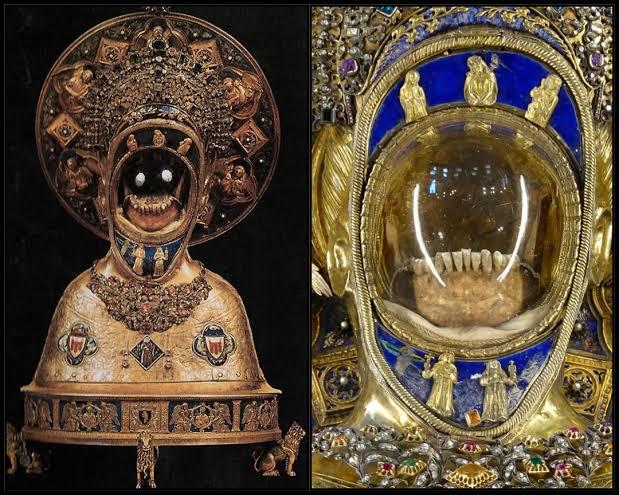
Well Documented As A True Find
Saint Bonaventure, the Minister General of the Franciscans and one of the era’s most respected theologians, was present at the exhumation. His testimony carried weight. This was no peasant’s superstition; this was witnessed, documented, and interpreted by the intellectual elite of the 13th century as a miracle — divine proof of sanctity frozen in tissue.
St Anthony’s Tongue: The Preacher’s Instrument
The facts were impossible to ignore. Anthony of Padua was perhaps the most remembered Christian speaker of his age. A Franciscan whose sermons would inspire crowds numbering over 30,000. He was no small fry in the eyes of the public nor God.
He converted entire towns to Christianity, hated heresy, and once talked to a school of fish when no one wanted to listen; that is how much he loved to talk!
His Tongue Was A Weapon of War
His tongue was his divine weapon in the war of spiritual divinity, a tool that brought people to Christianity and changed their entire future, according to this preacher’s beliefs.
To medieval observers, its preservation wasn’t random; it was both a divine message and a miracle.
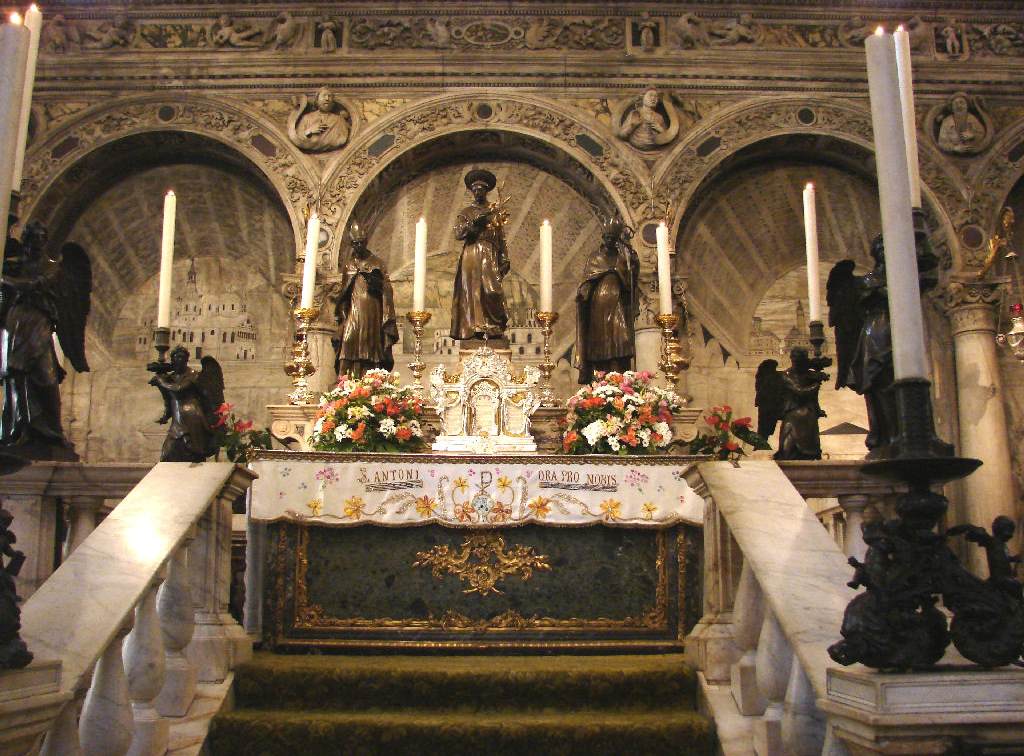
The Facts Of This Bizarre Find
The tongue is the first organ to decay after death, being the most fragile part of the body’s soft tissue that is under pressure from decay, and is one of the first parts of the human body to succumb to this process. The fact that this particular tongue survived was both eerie and proof of something.
Saint Bonaventure himself, overcome with awe, proclaimed: “O blessed tongue, you have always praised the Lord and led others to praise him! Now we can clearly see how great indeed your merits have been before God.” Wintz, J. (2023). Who Was St. Anthony? St. Anthony Messenger, 131(1), 27-31.
God had marked the very instrument through which His word had flowed. The tongue that had spoken truth, defended doctrine, and brought thousands to faith could not be allowed to rot like common flesh.
Sacred Flesh, Eight Centuries On
Today, that same tongue sits in a golden reliquary within the Treasury Chapel of the Basilica of Saint Anthony in Padua. It is now brown, desiccated, and hardened, like ancient leather. But it endures, which is still unusual. Pilgrims still come to venerate it and stare in awe at the impossible.
But Wait, There Is More Shocking Revelations
Modern examinations by curious archaeologists in 1981 revealed something even more shocking. Portions of Anthony’s larynx, vocal cords, and the cartilaginous tissue of his entire vocal apparatus had also been preserved. This is out of the realm of perhaps.
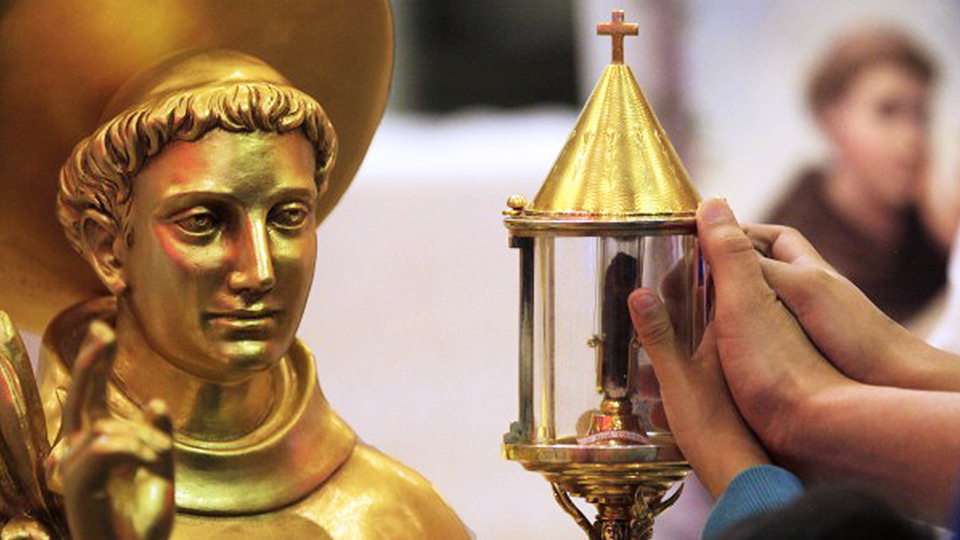
Most Think Flesh can’t survive.
The miracle extended beyond a single organ — it encompassed the complete instrument of speech, mummified together across eight centuries. Coincidence or Miracle?
The Miracle
The Catholic Church officially recognises this as a miracle — divine proof of sanctity. February 15th is still celebrated as a feast day commemorating the discovery. To the faithful, no natural explanation diminishes the symbolism: God chose to preserve exactly the organ that spread His word.
Science Or Miracle?
Archaeologists admit the preservation is unusual and freakish. However, this can be explained by pointing out that specific soil compositions, mineral content, and moisture levels in a sealed tomb can mummify tissue. This particular tomb was encased in stone in the church. This can lead to a more stable environment and mummification.
But ask yourself, why was only the tongue preserved? They explain further that because the tongue is a small organ filled with collagen, it might have been more resistant to decay in this situation.
No explanations erase the visceral strangeness of standing before such a relic. This isn’t a bone; bones are expected to endure, tongues are not.
A Preacher’s Tongue Endures Despite All Odds
This is soft tissue, preserved across centuries. It’s a fascinating passage, from living flesh that saved lives for the hereafter, to a tourist attraction. Still silently preaching to people today simply by existing. It still carries that unsettling space between biology and belief.
So, What Do You Think?
The friars who opened that tomb in 1263 saw a miracle. We might see taphonomy, chemistry, and chance. But peer into that reliquary in Padua’s basilica, and you’re staring at the same paradox they faced: a piece of human body that should not exist.
The tongue that preached the word of God still preserves today, convincing those who see it that miracles do happen. That the impossible can be possible.
References:
- Basilica di Sant’Antonio, Padua. “The Relics of Saint Anthony.” Official documentation, Treasury Chapel.
- Bonaventure of Bagnoregio (13th century). Witness testimony, exhumation of 1263. Referenced in Franciscan hagiographical sources.
- Legenda Assidua (c. 1232-1250s). Contemporary Franciscan biography of Anthony of Padua.
- 1981 Scientific Examination. Vatican documentation of additional preserved vocal apparatus.

